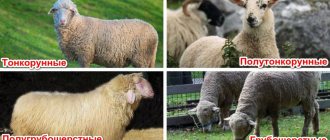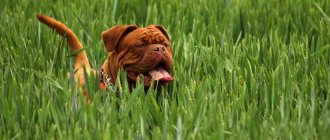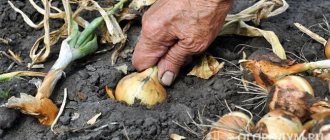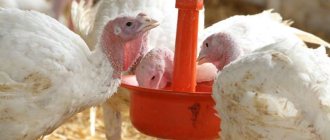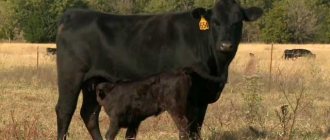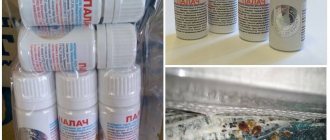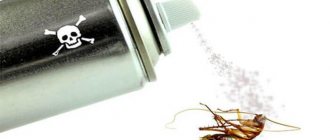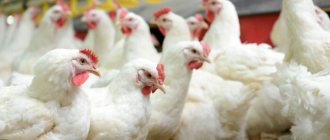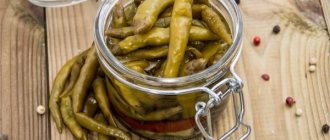Home » Articles about pheasants » Incubation of pheasants at home
In April-May, 2 weeks after mating, female pheasants begin to lay eggs. Over the course of 3 months, they lay 25-50 eggs, depending on the breed. Incubation of pheasants at home is carried out using incubators - females have a weak brooding instinct and can abandon the clutch without waiting for offspring. By placing pheasant eggs on chickens, it will not be possible to obtain a significant increase in the number of livestock.
Terms and general rules for incubating pheasant eggs
The incubation time for pheasants is no more than 25 days. Monitor the humidity and temperature conditions throughout the entire period, and perform ovoscopy to cull dead embryos.
This table fully describes the incubation schedule by day:
| Period | Days | Temperature, degrees | Humidity, % | Turning over (number of times per day) | Ventilation |
| 1 | 1-7 | 37,8-38,1 | 60-65 | 4 | No |
| 2 | 8-14 | 37,8-38,1 | 60-65 | 4-6 | No |
| 3 | 15-21 | 37,8-38,1 | 60-65 | 4-6 | 1-2 times a day for 15 minutes |
| 4 | 22-25 | 37,5-37,8 | 75-80 | not required | No |
All incubation takes place smoothly and is extremely stable. Only starting from day 22 there are slight changes. To ensure uniform hatching of chicks, the humidity increases and the temperature, on the contrary, decreases.
Proper nutrition
For breeding for fattening, birds are kept in large groups, using ordinary chicken feed in their diet. But if the farm is small, or the birds are raised for breeding, it is advisable to feed the birds with wet mash.
Pheasants eat combination feeds or wet mashes with plenty of protein.
These may include:
- Corn or wheat. It is permissible to add up to 50 percent of the total feed mass.
- Barley – no more than 40 percent.
- Oats - it is better to feed only adult individuals so as not to exceed 30 percent of the total diet.
- Millet is a mandatory addition for chicks and young birds up to 20 percent. Adults no more than 10 percent.
- Beans, beans, peas. Offered only to mature pheasants. If the diet contains more than half of legumes, you need to add cobalamin and methionine.
- Green crops (alfalfa, young nettles, clover) in summer or fortified herbal flour in winter.
Feeding pheasants
Until the age of two months, pheasants are recommended to use feed for turkey poults or broiler chickens. Feed distribution standards are in the table:
Protein feed for broilers is suitable for young animals
The menu must include finely chopped boiled eggs. A week after hatching, the chicks can begin to be given fresh greens little by little. Chickens are fed every two hours during the day and several times during the night.
Selection and storage of eggs before laying
To ensure the best results from the incubation process, follow simple egg selection principles:
- Size. Eggs should be large and regular in shape. Chicks that hatch from small specimens often have birth defects.
- Shell. The surface must be intact and smooth. Cracks, bloody inclusions and large pores are not allowed.
- Number of yolks. Eggs with two yolks are not viable.
- Color. The shell should not be too light or dark. The survival rate of future chicks directly depends on color.
Specimens that have one yolk located in the center and an air chamber at the blunt end are considered high-quality. Ovoscoping helps to see all the imperfections of an egg.
Eggs collected within 3 days are most suitable for incubation. Store them for no more than 15 days under the following conditions:
- the room should be dark and well ventilated;
- temperature – from +5 to +15 degrees;
- humidity level – not lower than 65% and not higher than 70%;
- The egg should stand upright, with the sharp end down.
Turn the eggs 1-2 times a day to prevent the yolk from sticking to one of the walls. After 15 days of storage, they lose their ability to hatch by a quarter. If the eggs have lain for 25 days or more, there is no more than a 5% chance of chicks hatching.
Ovoscopic examination
Before the egg is sent to the hatchery, it is carefully examined with an ovoscope to identify any defects. Using an ovoscope, they examine whether there are any defects on the shell, what color the yolk is and where it is located, the position and size of the air chamber, and the composition of the protein.
If you don’t have an ovoscope, you can make one yourself. For this you will need the following materials:
- a piece of cardboard or tin;
- bulb;
- wire with a plug at the end;
- dark and light paper.
And then everything is simple. A cylindrical base is made from tin or cardboard. A light bulb is placed in the center, to which a wire is attached to connect to the electrical network. In the middle the base is covered with light paper, and on top with dark paper. Opposite the light bulb, make a hole in the shape of an egg. There are other options. To create an ovoscope, you can use a box that has a side hole (it must be adjusted to the diameter of the egg), and attach a light bulb with a power of up to 200 W there. You can also use a table lamp as an ovoscope.
Before inspecting the eggs, the room should be darkened. Next, place the egg on the hole and examine it carefully.
The main signs of a high-quality pheasant egg:
- the yolk is located in the center with virtually no movement;
- the white is dense and clearly visible;
- the contours of the yolk are poorly defined.
An egg is considered unsuitable for breeding if it has two yolks, cracks on the surface of the shell, bloody spots, or large pores. If the pheasants did not have enough vitamins and minerals in their food, the protein in the egg will be sparse. This can be determined by looking at the yolk. If it is located near the shell and moves sharply when wrapped, then the protein is in a rarefied state.
If a crack is detected in the shell, you can try to save the embryo. To do this, seal the crack with adhesive tape or BF-6 glue before placing it in the hatchery. Eggs can be divided into three categories: small, medium and large. It is better to lay each category separately, then you will get young animals of uniform quality.
Preparation for bookmarking
Prepare your eggs properly. 90% of success depends on this.
Cleaning from dirt
Do not wash the eggs to avoid damaging the protective shell. If dirty, use a soft brush or damp cloth.
Disinfection
Before laying, dip the eggs in a slightly pink solution of potassium permanganate. The temperature should not exceed 27-30°C. Place them on a towel and let dry.
The following drugs are also used for disinfection:
- Bleaching powder;
- Virkon-S;
- Formalin;
- Lysol;
- Ozone;
- Polidez;
- Bactericide.
Use in food
Pheasant eggs (photo above) are prepared in various ways - baked, boiled, fried, added to sauces. The taste and quality of the egg depends on the type of pheasant and what it ate. Boiled pheasant eggs are more tender than chicken eggs. Before use, they must be rinsed well at a water temperature of at least 46 °C. Thanks to this, all harmful bacteria will die and will not enter the human body. Eggs can only be eaten cooked. Raw ones can be harmful to the human body. They have a negative effect on digestion, in addition, there is a chance of contracting salmonellosis.
How is bookmarking done?
To ensure that the future generation is of high quality and the embryos do not die in the early stages, adhere to the following rules:
- Before placing eggs for incubation, warm them at room temperature for 3-5 hours or in warm water for 1-2 hours and dry.
- Wash the incubator and plug it in a day before laying the eggs. It should warm up. During these days, monitor the humidity sensors (hygrometer) and thermometers. If there are problems with their operation, fix them.
- Mark the eggs themselves on each side to control daily turning. If you have an automatic incubator with horizontal egg placement, marks are not needed.
Markings on eggs are best done with a simple pencil. Unlike markers, it does not contain any harmful components, and will not harm future chicks.
Description
There are a large number of pheasant breeds, however, they have distinctive features that make them easy and quick to recognize. Pheasants are distinguished by their large build and striking appearance.
Many are distinguished by their grace and impeccable plumage. Beautiful feathers are characteristic only of males. Females have gray feathers with the only decoration in the form of black and brown specks.
The rest of the body of the male pheasant has a wide variety of shades: from orange to emerald. Take a look at the photos of domestic pheasants of various breeds, plumage colors and sizes. The body length of an adult male does not exceed 85 centimeters.
As for breeding, any breed is suitable for this, but larger ones are often chosen.
Transillumination
The eggs are scanned with a special device - an ovoscope. You can buy it or make it yourself. Or use a narrow flashlight with a bright beam. Some resort to using a phone with a flashlight.
How to perform ovoscopy:
- Prepare a container for rejected eggs.
- Place the egg on the ovoscope or bring a flashlight to it. The room should be completely dark.
- Slowly turn the egg, inspecting it carefully.
- Discard dead or non-viable (depending on the period in which candling is carried out) specimens.
When is ovoscopy performed:
- Carry out the first ovoscoping even before laying eggs in the incubator in order to identify eggs unsuitable for incubation.
- The second translucency is on the 7-8th day. You can observe the well-developed circulatory system of future chicks. At the same time, dead embryos are culled.
- Perform the third ovoscoping at the end of incubation. Thanks to it, those eggs are identified in which the embryos died after the second candling.
Eggs that are not suitable for incubation are shown below:
- 1 – the yolk should not be at the sharp end of the egg;
- 2 – mixing yolk with white is unacceptable;
- 3 – no spots should be visible;
- 4 – the so-called “cuff” indicates the unsuitability of the egg.
It doesn’t matter whether they are chicken, quail or pheasant eggs. The principle of ovoscopy is the same for everyone.
The video below clearly shows how fertilized and unfertilized eggs differ:
What problems might you encounter?
Eggs for incubation should be purchased from specialized farms; upon purchase, breeders advise beginners; they can be contacted with doubts and questions about the contents. For drinking, it is better for baby pheasants to install nipple drinkers so that the babies cannot get wet.
Nimble and shy pheasant chicks begin to fly after 2-3 weeks of life. The aviary for chicks must be covered from above so that they do not fly away.
High-quality nutrition and maintenance of birds allows you to quickly form a breeding stock and start making money from breeding them. Pheasants are easy to keep and are not susceptible to most avian diseases. Birds naturally have strong immunity; in Chinese medicine, pheasant meat is considered healing, it is used to restore strength after serious illnesses, and is recommended for people with cancer. Males are often purchased as ornamental birds due to their bright plumage. That is why the costs of breeding and keeping birds quickly pay off.
Stages of embryo development
The incubation process is divided into four periods:
- 1st period. First of all, the notochord (temporary spine) develops, the rudiments of blood vessels, organs of hearing and vision appear, and the heart begins to contract. By the middle of the period, the embryos have a full blood circulation cycle, and the rudiments of legs and wings appear. The thymus gland, stomach and skeleton are formed. During the final stages of the first period, the beak develops and the circulatory system is fully functional. Also at this stage, the sex of the future pheasant is determined.
- 2nd period. When moving to the second stage, the skeleton has already completed its ossification, the beak is almost completely keratinized. At the same time, feathers and claws are just beginning to appear. The eyelids completely cover the cornea of the eyes. By the end of the second period, fluff appears all over the body.
- 3rd period. Development is no longer as active as in the early stages. The claws become completely horny, and by the 19th-20th day of incubation, the chicks open their eyes.
- 4th period. This is the final stage of chick development. By this time, the internal organs are already fully formed. Pulmonary breathing begins, shell pecking occurs and pheasant chicks are born.
What is this process?
Incubation is the process by which the egg develops. Today this is an excellent option for obtaining healthy offspring when the female lacks the ability to incubate.
But for this, the farmer must approach this responsibly. It is important to carry out the preparatory work correctly and create favorable conditions for the development of embryos.
First steps after hatching
Keep the newborn chicks in the incubator for some more time. They must dry out.
Rules for caring for newborn chicks:
- Transplant the chicks to a warm, draft-free place with good access to light. You can use a regular box as a shelter. Calculation: 30 heads per 1 square meter. The place of detention must be dry, clean and constantly cleaned.
- The initial temperature is 32°C. From the 3rd to the 7th day – 30°C. Then, every couple of days, lower the temperature by one degree until it reaches 18-20°C.
- Place two bowls for food and water. The drinking bowl should be shallow so that the babies do not drown in it. Secure it or place a pebble at the bottom. This will prevent the chickens from knocking over the container.
In the first half of the first day, do not feed the chicks, and after 10-15 hours of life, be sure to give them medium-grained sand mixed with finely crushed charcoal and sifted from dust through a sieve.
From the second half of the second day for 2-3 days, give hard-boiled chicken protein, which is pressed through a sieve to make “sausages”. Sprinkle this protein with crushed wheat breadcrumbs. For the first month, feed the chicks 6 times a day.
The video shows hatched and already dried pheasants:
When do the chicks hatch?
Pheasant chicks hatch already on the 25th day after they are placed in the incubator. Like all children, they learn a world that is filled with many dangers.
The national dish of Georgia, chakhokhbili, is created according to a traditional recipe from pheasant meat. But today this bird is listed in the Red Book. Therefore, such meat can be bought at a high price on the black market. In many countries, buying animals that are on the verge of extinction is considered a criminal offense.
First you need to make sure that the chicks do not drown in a bowl of water. To do this, it is important to maintain the water level no higher than the shank. It is also important that they feel warm. Otherwise, to keep warm, they gather in a heap, step on each other and may die. Moreover, the chicks need to be fed regularly every two hours, once during the day and twice at night.
About
Common mistakes
To ensure that your expectations are met, do not make the following mistakes:
- low quality of parent stock;
- non-compliance with egg storage rules;
- the incubator was not run in test mode;
- overheating (hatching will begin prematurely);
- underheating (emergence of chicks is late, developmental deviations are possible);
- low humidity levels lead to exhaustion and death;
- high humidity levels slow down or stop development altogether.
Methods of application
There are several options for preparing pheasant eggs:
They are not used in baking.
Before using as intended, break the eggs one at a time into a clean bowl and make sure there is no off-putting odor and the whites are clear to ensure the freshness of the product. Be sure to wash before use to remove dirt and harmful bacteria.
The ideal temperature for these purposes is 45C°, since at this level pressure is formed under the shell, which prevents harmful particles from getting inside. Using cool water will have the opposite effect.
Used as a component of home cosmetics.
Raw pheasant eggs are added to face masks as they contain many valuable ingredients. Let's look at one mask option for each skin type:
- Add 1 teaspoon of cream or sour cream of any fat content to 1 beaten egg. Spread the mixture evenly on your face. Wait at least 25 minutes and rinse with cool water. This mask is suitable for those who are concerned about flaking and dry skin.
- Grind 1 yolk with a tablespoon of olive oil and a spoonful of lemon juice. Rub the resulting mixture into the skin of your face, neck and décolleté. Remove the mask with lukewarm water after 25-30 minutes. The mask is ideal for those with normal skin type; it removes the first signs of aging.
- To nourish the skin and improve tone, mix thoroughly one yolk, a teaspoon of honey and 1 tbsp. spoon of olive oil, apply the resulting mixture to your face. After 15-20 minutes, rinse with warm water.
True gourmets will appreciate such a delicacy as pheasant eggs. The product is worth trying not so much because of its extraordinary taste, but because of its valuable composition. You should not refuse it because of its cost, because the benefits of using such a product will significantly exceed their price.
Pheasant eggs are literally a storehouse of all kinds of useful substances and various vitamins. They are small in size, about half the size of chicken eggs. Pheasant eggs can be dark gray, gray, light gray, greenish gray, light green, green and almost marsh colors, and can be plain or speckled.
There is a legend according to which one of the Argonauts, Jason, who went on a campaign in search of the Golden Fleece, already on the way back saw a beautiful bird with wonderful plumage and, unable to resist, took it with him. Among the Greek aristocrats and in Ancient Rome, where they arrived a little later, pheasants served a purely decorative role. A little later, they spread to Europe and England, where they began to be hunted and their meat and eggs were eaten.
Pheasants are bred in Southern and Western Europe, from the Primorsky Territory to Korea, in China, Vietnam, the Caucasus and Transcaucasia.
There are mainly two types of pheasants bred in Ukraine – Caucasian and Romanian. The color of the eggs of these species can vary from light sand to light marsh color. These breeds have the largest egg size and are comparable to the eggs of young laying hens. The taste of a Romanian pheasant egg is quite neutral and practically not pronounced compared to a chicken egg. It should be noted that the taste of the egg directly depends on the bird’s diet. The yolk in pheasant eggs is quite large; The protein is very tender, much more tender than chicken. Unfortunately, not everyone knows that pheasant eggs can be used in cooking. And it’s quite difficult to buy them; they are not sold in supermarkets; the easiest option is to order them online directly from the breeder’s pheasant farm.
Eggs can be used in a variety of ways: boiled, baked, used for making salads, but they are rarely used for baking. To make sure that the egg is good and fresh, before eating, be sure to break it into a separate bowl and check for any foreign odors and cloudiness of the white.
Before cooking pheasant eggs, you need to wash them well in order to get rid of harmful microorganisms and simply dirt. Eggs should be washed in warm water at a temperature of about 45°C. During such heat treatment, pressure arises inside the egg, which prevents dirt particles and bacteria from entering. If you use cold water for rinsing, you can achieve the opposite effect.
Types of incubators
When choosing the type of incubator, decide what volume of chicks you plan to hatch. Different models are designed for different numbers of eggs and have their own additional functions.
With manual overturn
Used when the number of eggs is small. Considered a budget option. Using this type of incubator, you turn the eggs yourself at regular intervals to ensure even heating. Many breeders prefer the Cinderella model.
With mechanical revolution
They belong to the middle price category and are more convenient to use. Human participation is kept to a minimum.
It consists only of pressing a lever or button after a certain time, which ensures that the entire pallet is turned over. An example of this type of incubator is the “Ideal Hen”.
With automatic revolution
It is the most convenient to use. Your time costs are reduced to a minimum. This is the best option for hatching chicks in large batches, since the incubator does not provide for turning the eggs manually.
With automatic models, all that is required is for a person to place the eggs in the incubation chamber, and the automatic mechanism will do the rest for you. After a given time, he changes the position of the eggs so that they are heated evenly on all sides. A good automatic type model is “Blitz norm”.
How to choose a suitable incubator?
Please note the following before purchasing:
- The number of chicks planned to be hatched. It is better to select a device with a large capacity, because some of the incubated eggs will be rejected.
- Power outages. To prevent the eggs from getting too cold, the incubator must have power from an alternative source.
- Reliability of sensors and regulators. In all ratings of incubators, models with electronic filling are the leaders in terms of reliability. With the help of electronics, it is possible to comply with the necessary climatic conditions as accurately as possible. The viability and normal development of embryos directly depends on the correct regime.
- The method of heating the air is with a lamp or electric heating element. The advantage of the built-in heating element is uniform heating of the air. Moreover, it is more reliable. The advantage of the lamp is that it is easy and quick to replace. Decide what is more priority for you.
- How eggs turn over. The automatic egg turning system facilitates the breeder’s work, but significantly increases the cost of the device.
This video explains in detail how to choose the right incubator for yourself:
Breeding pheasants in an incubator is not an easy task, requiring certain conditions and knowledge. The equipment and type of incubator also play a significant role. By strictly adhering to the basic principles and taking into account all the necessary factors, you will get a good brood of healthy chicks.
0
0
Copy link
Pheasant nutrition
The nutrition of pheasants depends on various factors - the time of year, living conditions, and the condition of the bird. It is enough to make a mistake in the norm of at least one element - and in any direction, so that it immediately affects the metabolism and general condition of the bird.
Rules
Rules for feeding pheasants:
- The diet is designed so that it satisfies all the nutritional needs of the bird.
- The diet must contain components that match the taste of the bird - the pheasant must eat its food with appetite.
- The volumes of feed offered must correspond to the capabilities of the digestive system, otherwise the bird may experience motor and secretory disorders in the digestive organs.
- The diet is designed to make maximum use of available and inexpensive feed so that keeping pheasants is cost-effective. But this should not in any way affect the quality of the feed, its nutritional value and energy value.
Feeders and drinkers
Most of the costs of keeping pheasants are on feed. That is why you need to choose feeders in which the food does not go to waste - does not crumble, does not become dirty and does not get wet
If the feeder is made of wood, then it is important to remove all knots, burrs and sharp edges so that the birds do not get injured
The design of the feeder should be such that birds can take food, but cannot climb into it. The most practical option is a groove-type feeder.
Features of trough feeders:
- the end walls are higher than the side walls - this allows you to install a turntable that does not allow birds to sit in the feeder;
- filling the feeder with food - 2/3.
Tray-type feeders are also suitable for chicks - plastic, metal, plywood. The height of the sides is up to 2 cm. The total size of the tray feeder is 30x70 cm. It is designed for 20-30 chicks.
Pheasant drinkers are usually made of glass or plastic. They can be grooved, flow-through, cup-shaped.
If you use feeders on stands, you can get additional free space. There should be enough feeders so that there is no crowding during feeding.
Diet
When pheasants are kept in enclosures, they obtain part of their food themselves - they eat greens, bush foliage, insects, and larvae. The average feed requirement for one adult pheasant is 80 g. The exact amount of feed is determined experimentally and depends on the breed.
When keeping pheasants in private farms, they are fed wet mash, which may consist of the following components:
- compound feed;
- food waste;
- grain (millet, wheat, barley, sorghum, ground peas, corn);
- succulent food - greens, vegetables;
- food of animal origin.
The diet of pheasants may also contain sunflower seeds, fruits, berries, and worms.
During the mating season, food should become more nutritious. In winter, the diet should be supplemented with apples and rowan berries. In the summer, crushed chalk, lime, and shell rock are mixed into the food - the thickness of the shell and the beauty of the plumage depend on these components.
Table 2 shows the approximate diet of adult pheasants for the summer and winter seasons.
table 2
| Stern | Daily ration, g | |
| autumn winter | spring Summer | |
| Concentrated feed (wheat, millet, corn, etc.) | 50 | 45 |
| Juicy food (potatoes, carrots, etc.) | 10 | 20 |
| Animals (cottage cheese, minced meat, meat and bone meal, etc.) | 6 | 9 |
| Vitamins (fish oil, yeast) | 3 | 2 |
| Mineral (salt, lime) | 3 | 3 |
You can prepare your own pheasant food. An example of an affordable but complete diet in % is in Table 3.
Table 3
| Ingredients | Daily ration, g | |
| autumn winter | spring Summer | |
| corn | 40 | 40 |
| wheat | 20 | 20 |
| wheat bran | 14 | 9 |
| sunflower cake | 10 | 15 |
| meat and bone meal | 3 | 5 |
| fish meal | 10 | 10 |
| feed yeast | 3 | 1 |
